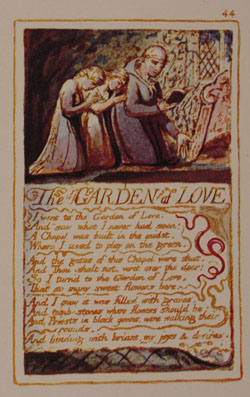
Poetry, also called verse, is a form of literature that uses aesthetic and often rhythmic qualities of language − such as phonaesthetics, sound symbolism, and metre − to evoke meanings in addition to, or in place of, a prosaic ostensible meaning. A poem is a literary composition, written by a poet, using this principle.
A quatrain is a type of stanza, or a complete poem, consisting of four lines.
A sestina is a fixed verse form consisting of six stanzas of six lines each, normally followed by a three-line envoi. The words that end each line of the first stanza are used as line endings in each of the following stanzas, rotated in a set pattern.
A tercet is composed of three lines of poetry, forming a stanza or a complete poem.

Musophilus is a long poem by Samuel Daniel, first published in 1599 in his Poetical Essays.
Rhyme royal is a rhyming stanza form that was introduced to English poetry by Geoffrey Chaucer. The form enjoyed significant success in the fifteenth century and into the sixteenth century. It has had a more subdued but continuing influence on English verse in more recent centuries.
A rhyme scheme is the pattern of rhymes at the end of each line of a poem or song. It is usually referred to by using letters to indicate which lines rhyme; lines designated with the same letter all rhyme with each other.

A rubāʿī, or chahārgāna, is a poem or a verse of a poem in Persian poetry in the form of a quatrain, consisting of four lines.
Chain rhyme is a rhyme scheme that links together stanzas by carrying a rhyme over from one stanza to the next.
The Chant Royal is a poetic form that is a variation of the ballad form and consists of five eleven-line stanzas with a rhyme scheme ababccddedE and a five-line envoi rhyming ddedE or a seven-line envoi ccddedE. To add to the complexity, no rhyming word is used twice It was introduced into French poetry in the 15th century by Christine de Pizan and Charles d'Orléans and was introduced into England towards the end of the 19th century as part of a general revival of interest in French poetic forms. The complexity of the form caused William Caswell Jones to describe it as "impractical" for common use The Chant Royal was the most complicated form of poetry in Northern France during the 15th century, though not as complex as the sestina, which was more popular in Southern France. The form was often used for stately, or heroic subjects.

Venus and Adonis is a narrative poem by William Shakespeare published in 1593. It is probably Shakespeare's first publication.
"Errantry" is a three-page poem by J.R.R. Tolkien, first published in The Oxford Magazine in 1933. It was included in revised and extended form in Tolkien's 1962 collection of short poems, The Adventures of Tom Bombadil. Donald Swann set the poem to music in his 1967 song cycle, The Road Goes Ever On.
Tail rhyme is a family of stanzaic verse forms used in poetry in French and especially English during and since the Middle Ages, and probably derived from models in medieval Latin versification.
Accentual-syllabic verse is an extension of accentual verse which fixes both the number of stresses and syllables within a line or stanza. Accentual-syllabic verse is highly regular and therefore easily scannable. Usually, either one metrical foot, or a specific pattern of metrical feet, is used throughout the entire poem; thus one can speak about a poem being in, for example, iambic pentameter. Poets naturally vary the rhythm of their lines, using devices such as inversion, elision, masculine and feminine endings, the caesura, using secondary stress, the addition of extra-metrical syllables, or the omission of syllables, the substitution of one foot for another.
This is a glossary of poetry.

"The Garden of Love" is a poem by the Romantic poet William Blake. It was published as part of his collection, Songs of Experience.
"A Fig for Fortune" is a 1596 long allegorical poem by the English Catholic writer Anthony Copley written as a parodying response to Edmund Spenser's The Faerie Queene. It intended to reject both Protestant portrayals of English Catholics as inherently disloyal to Queen Elizabeth, as well as hard-line Jesuit calls for Catholics to become martyrs by resisting the Protestant Queen.
The Sapphic stanza is the only stanzaic form adapted from Greek and Latin poetry to be used widely in Polish literature. It was introduced during the Renaissance, and since has been used frequently by many prominent poets. The importance of the Sapphic stanza for Polish literature lies not only in its frequent use, but also in the fact that it formed the basis of many new strophes, built up of hendecasyllables and pentasyllables.

"Summum Bonum" is a poem by Robert Browning. It was published in poet's last book, Asolando in 1889. It is a short poem or epigram. The title is a Latin phrase that means the highest good.
Poetic devices are a form of literary device used in poetry. Poems are created out of poetic devices composite of: structural, grammatical, rhythmic, metrical, verbal, and visual elements. They are essential tools that a poet uses to create rhythm, enhance a poem's meaning, or intensify a mood or feeling.





